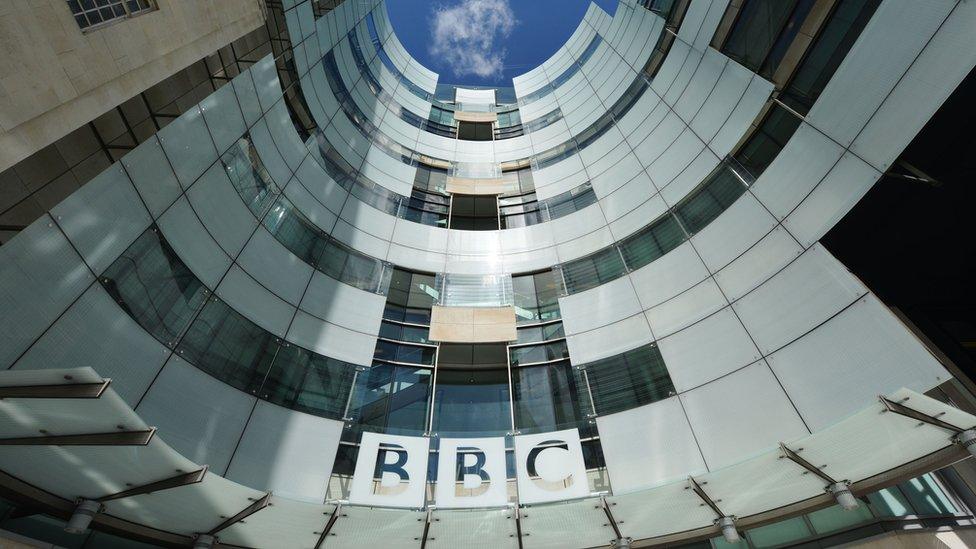General election 2019: Row over use of 'fake newspapers'
- Published
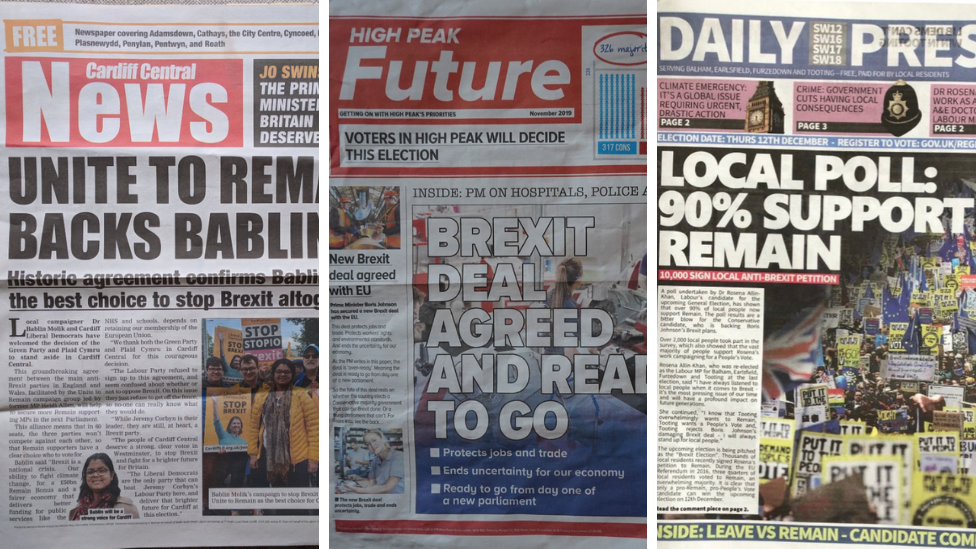
The papers have proved controversial with voters and industry leaders
The Conservatives, Labour and Liberal Democrats have been accused of creating "fake news" by presenting their election campaign materials as newspapers.
They have mimicked the style of local papers in their names and headlines and some senior media figures have called for it to stop.
The parties claimed the practices are common and within the law but what do voters think, and does it work?
'Blatantly trying to trick the people'
Ben Roberts, 25, said he was used to seeing "fake news" online but was "gobsmacked" when a red-topped "High Peak Future" from the Conservatives came through his front door.
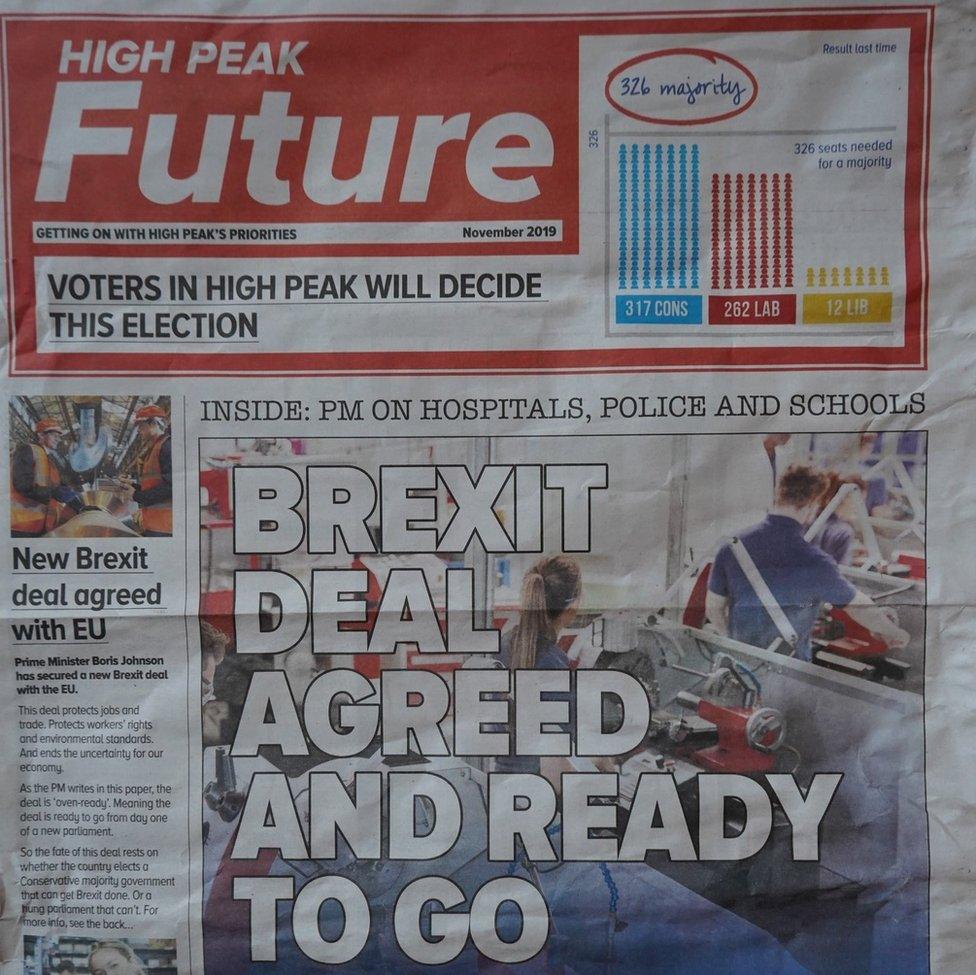
Papers sent out by the Conservatives under the same name with the same headlines and "exclusive" with Boris Johnson have been spotted in constituencies across the country

"If it came through my grandparents' letter box they might not think twice," the videographer from Glossop in Derbsyhire added.
"I was not planning on voting Conservative. But I definitely had more respect for them as a party.
"This just shows a level of untrustworthiness, blatantly trying to trick the people."

This small print at the bottom of the front page of the Conservative paper was the only bit on the front that made it clear it had been made by the party
'Level of deception'
For Adrian Faiers, a writer living in Chelmsford, the paper was the "last straw" which turned him against voting for the Liberal Democrats.
Allow X content?
This article contains content provided by X. We ask for your permission before anything is loaded, as they may be using cookies and other technologies. You may want to read X’s cookie policy, external and privacy policy, external before accepting. To view this content choose ‘accept and continue’.

He said: "It's been a deceptive campaign. First they used a bombardment of leaflets to create the impression the gap between the Lib Dems coming second and the Tories winning (when the second party was Labour), then this newspaper gave the impression the gap was closing.
"That level of deception was a step too far for me."
Do people think they are real newspapers?
It appears some people have been taken in. Initially at least.
In Tooting in London, 54-year-old Andy Lee said he did not realise it was campaign literature when he first glanced at Daily Press, and told others about the headline statistic before going back and looking at it more carefully.
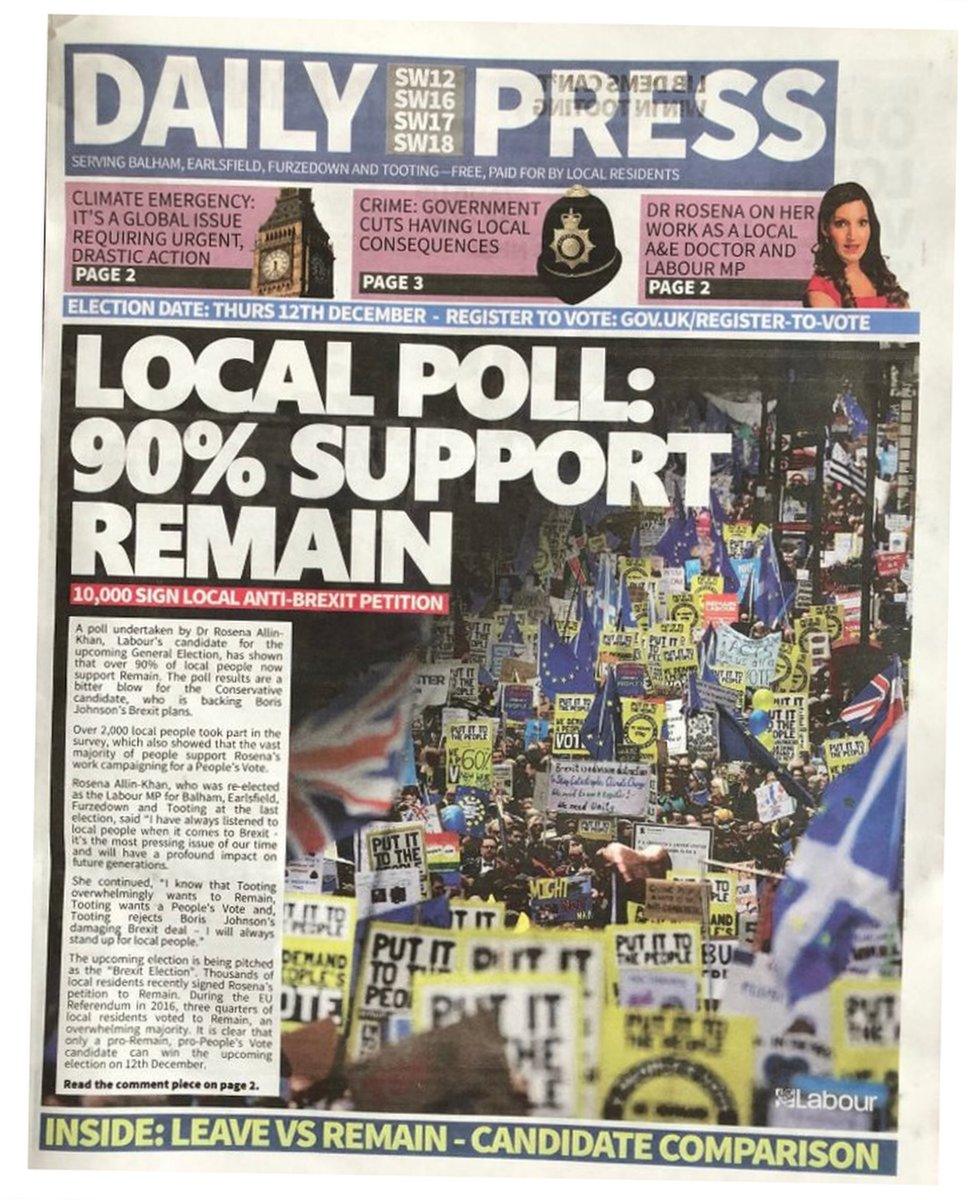

"There's so much of this going around and it's a big concern. It is underhand," he said.
"If you thought people could see the difference you'd put your logo where you can see it. But obviously they don't and that is why they've hidden it."
What do the parties have to say about it?
The three parties involved have said this is common practice and follows the letter of the law.
The Conservatives said: "This type of literature is commonly used by parties up and down the country and meets all the relevant laws and guidelines.
"It's a useful way to update local residents on our plans and focus on people's priorities."

A Labour party spokesman said their paper was "clearly branded on both sides".
He added: "We believe voters can tell the difference between campaign literature and newspapers, particularly during a general election."
The Liberal Democrats said: "Tabloid-style leaflets have been used by all parties for decades and suggesting that they are duping voters does a disservice to the British public."
The Electoral Commission confirmed it does not regulate on content or design of campaign material, and although it must say who made and paid for it, there is no rule on the size of the text.
And what about other campaign literature?
Some voters have received letters similar to those used by HMRC or utility firms.
What was inside was clearly a Conservative election leaflet - a bill for "the cost of Corbyn" - but one woman said she "needed a magnifying glass" to read on the envelope that it was from the Tories and thought it was official until it was opened.
The party has not responded to a request for comment.
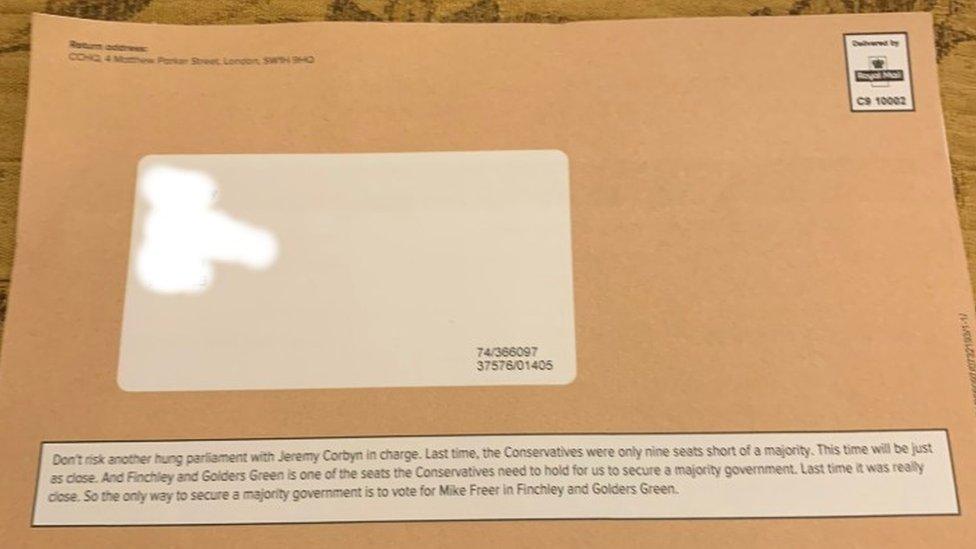
The Liberal Democrats have also come under fire for a letter which was sent to voters from a "polling and elections expert".
What it doesn't mention is the fact the writer Mike Smithson was a founder member of the party and previously stood as a candidate for them in the 1992 general election.
Mr Smithson, who runs a political betting website, has responded to it by saying while he did approve the wording, he did not approve the list of constituencies the letter was sent to.

This letter was sent to constituents in a seat where in the last election the Tories won 30,223 votes, Labour won 22,213 votes and the Lib Dems got 2,759
Ben Lowndes, who received one in Wells in Somerset, said: "Of all the campaign literature we've had, this leaflet was the least transparent.
"It was intended to convey an independent point of view, but isn't. Although the small print (at the bottom) says 'Lib Dem', if it's intended to make people think it's not from a party then that's ethically dubious."
The Liberal Democrats said there was a "clear" imprint to show they published it and their success depends on Labour voters switching to them.
Does this kind of campaigning work?
Parties spend huge amounts of money on leafleting and campaign material - a combined £13m on "unsolicited materials to electors" at the 2017 general election, about 35% of the total spend, external.
That might be why some people have been feeling inundated with flyers.
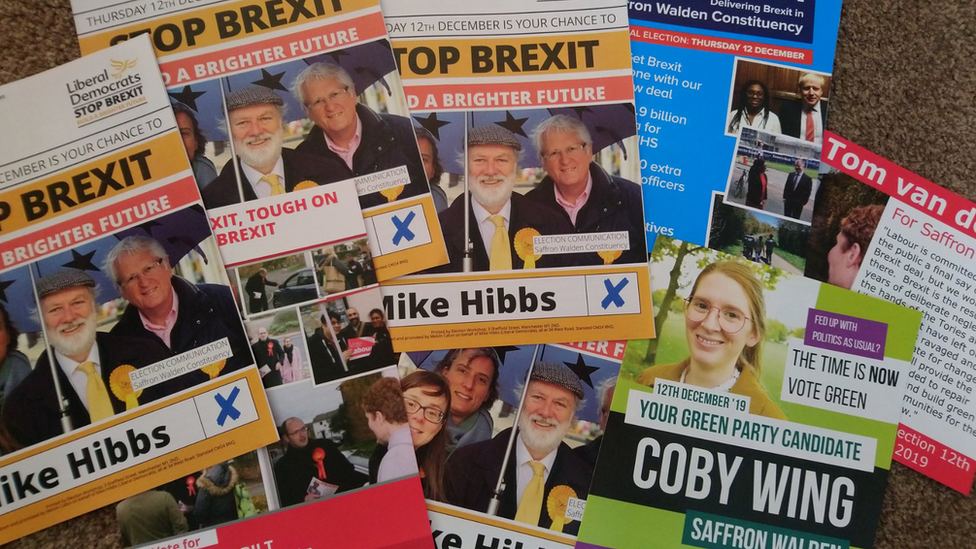
Parties spent more money putting leaflets through letterboxes than reaching voters online last election
But Caitlin Milazzo, associate politics professor at the University of Nottingham, is not sure that leaflets in the style of newspapers are particularly effective.
She said they were not new, but they are "rare" because they are intensive to produce an "inefficient way of getting your message across" and parties tend to want their branding to be prominent.
Some of the anger against them this year may have been generated by the fact that members of the public can quickly share election material online, she added.
"Every year people get fired up about micro targeting (when parties target their campaign material at specific people)," she said.
"They are more aware of it and there are more opportunities to share material than there used to be.
"People say it's undemocratic but often you find they are fine with it as long as it is from a party they like."
- Published4 December 2019
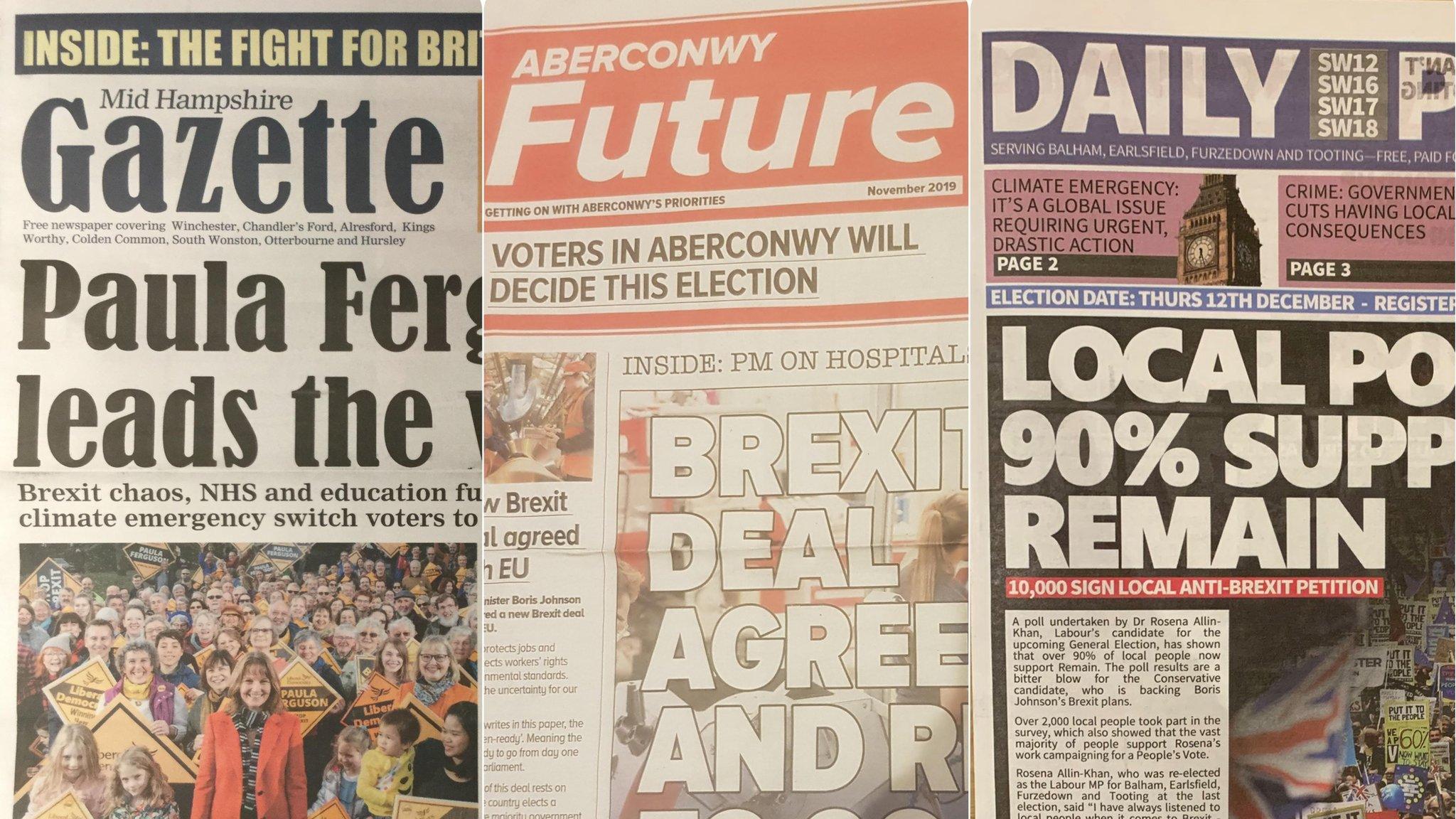
- Published14 November 2019
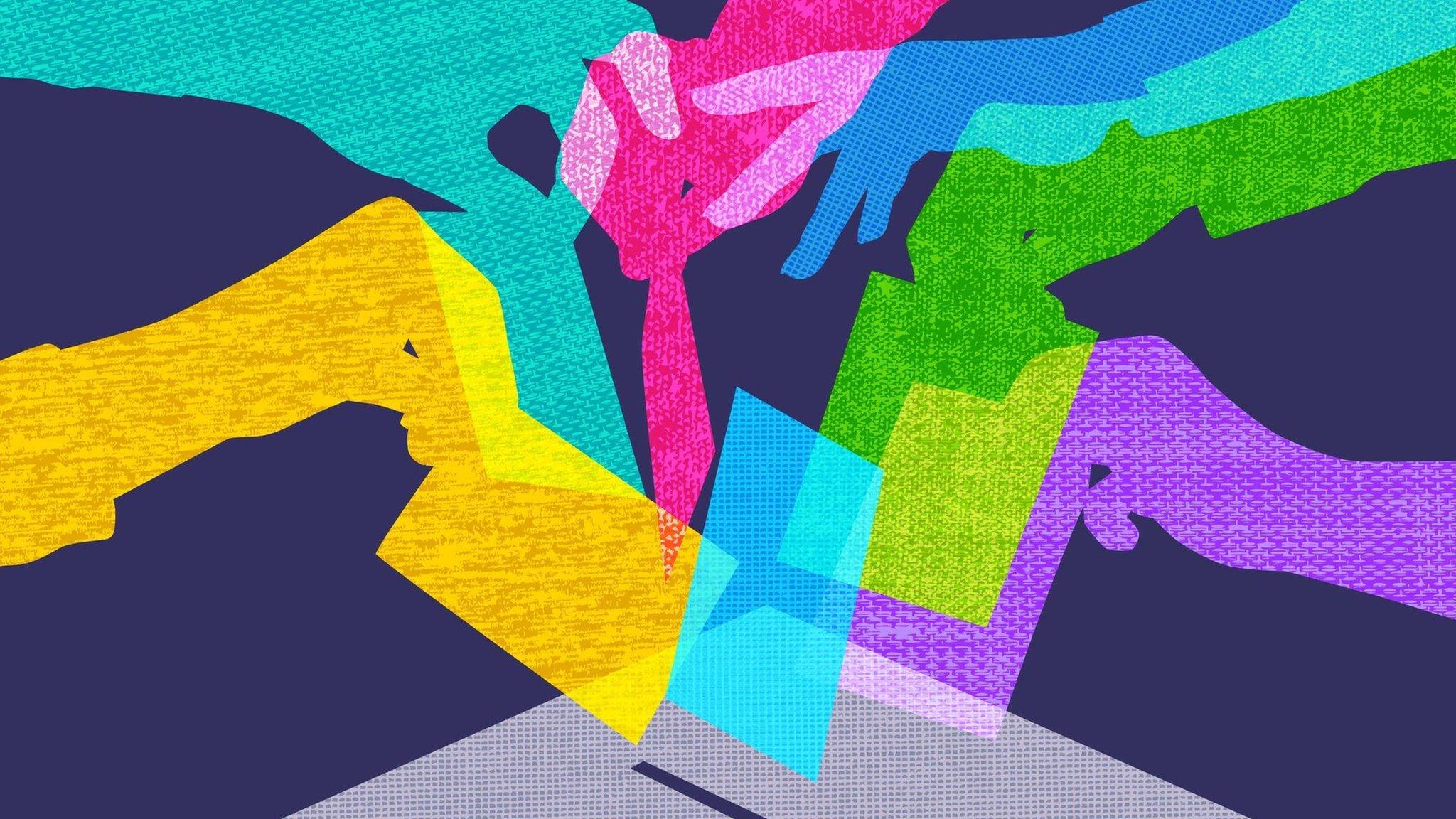
- Published13 September 2019
